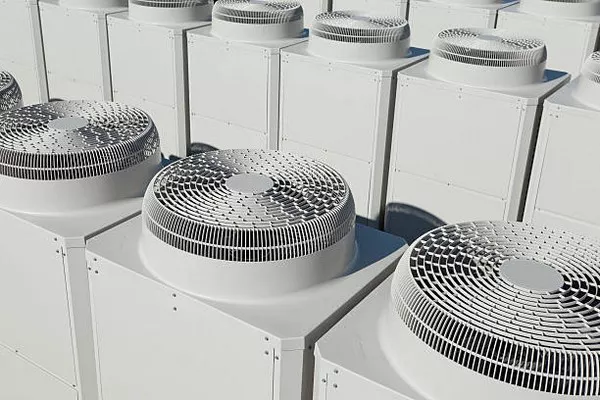Refrigeration systems are integral to modern life, preserving perishable goods, enabling climate control, and supporting various industrial processes. These systems operate on principles of thermodynamics, manipulating the transfer of heat to maintain desired temperatures. Understanding the fundamentals of refrigeration is crucial for engineers, technicians, and anyone interested in the field. In this article, we delve into the three primary types of refrigeration systems, their mechanisms, applications, and comparative advantages.
1. Vapor Compression Refrigeration
Mechanism:
The vapor compression refrigeration (VCR) system is the most widely used method for commercial and domestic cooling. It operates through a closed-loop cycle consisting of four main components: a compressor, condenser, expansion valve, and evaporator.
The process begins with the compressor, which draws low-pressure, low-temperature refrigerant vapor from the evaporator and compresses it into a high-pressure, high-temperature vapor. This compressed vapor then flows into the condenser, where it releases heat to the surroundings and condenses into a high-pressure liquid.
Next, the liquid refrigerant passes through the expansion valve, which regulates its flow into the evaporator. As the liquid expands into a low-pressure environment within the evaporator, it absorbs heat from its surroundings, causing it to evaporate into a low-pressure vapor.
Finally, the refrigerant vapor returns to the compressor to restart the cycle. This continuous process maintains the desired temperature within the evaporator while removing heat from the refrigerated space.
Applications:
Vapor compression refrigeration systems find widespread use in various applications, including:
Air Conditioning: These systems cool residential, commercial, and industrial spaces by removing heat and humidity from the air.
Refrigeration: They preserve perishable goods in refrigerators, freezers, and cold storage warehouses, extending their shelf life.
Process Cooling: VCR systems support industrial processes such as food manufacturing, pharmaceutical production, and chemical processing by maintaining specific temperatures during production and storage.
Advantages:
Efficiency: Vapor compression systems can achieve high levels of efficiency, especially when coupled with energy-saving technologies like variable-speed compressors and heat recovery.
Versatility: They can operate over a wide range of temperatures, making them suitable for various cooling applications.
Reliability: With proper maintenance, vapor compression systems are highly reliable and have a long service life.
2. Absorption Refrigeration
Mechanism:
Absorption refrigeration systems utilize a different principle compared to vapor compression systems. Instead of relying on a mechanical compressor to circulate refrigerant, they employ a thermodynamic process involving absorption and desorption of a refrigerant by a liquid absorbent.
The key components of an absorption refrigeration system include the generator, absorber, condenser, evaporator, and heat exchangers. The process typically involves the following steps:
Generation: Heat is applied to the generator, causing the refrigerant to evaporate from the solution and become a vapor.
Absorption: The vaporized refrigerant is absorbed by a liquid absorbent in the absorber, forming a concentrated solution.
Condensation: The concentrated solution flows to the condenser, where it releases heat and condenses into a liquid.
Expansion: The liquid refrigerant expands as it passes through the expansion valve into the evaporator, absorbing heat and cooling the desired space.
Recovery: The weak refrigerant solution returns to the generator, and the cycle repeats.
Applications:
Absorption refrigeration systems are commonly used in applications where waste heat or other low-grade heat sources are available, such as:
Industrial Processes: They provide cooling for chemical processes, food storage, and air conditioning in industrial settings.
Solar Cooling: Absorption refrigeration systems can be powered by solar energy, making them suitable for off-grid or environmentally conscious applications.
Cogeneration: They can utilize waste heat from power generation or industrial processes, improving overall energy efficiency.
Advantages:
Energy Efficiency: Absorption refrigeration systems can utilize waste heat or low-grade heat sources, making them highly energy-efficient.
Quiet Operation: They operate without mechanical compressors, resulting in quieter operation compared to vapor compression systems.
Environmentally Friendly: Absorption refrigeration systems can use natural refrigerants and renewable energy sources, reducing their environmental impact.
3. Thermoelectric Refrigeration
Mechanism:
Thermoelectric refrigeration, also known as the Peltier effect, relies on the thermoelectric properties of certain materials to create a cooling effect when an electric current is passed through them. This phenomenon occurs at the junction of two dissimilar conductive materials, where heat is absorbed or released depending on the direction of the current flow.
In a thermoelectric refrigeration system, multiple thermoelectric modules are connected in series or parallel to achieve the desired cooling capacity. When a direct current (DC) is applied to the modules, one side absorbs heat from the surroundings, while the other side dissipates heat, resulting in a cooling effect.
Applications:
Thermoelectric refrigeration systems are suitable for niche applications where compact size, precise temperature control, or portability is required, including:
Electronic Cooling: They are used to cool electronic components, such as CPUs, LEDs, and laser diodes, where precise temperature control is essential for optimal performance.
Portable Refrigeration: Thermoelectric coolers are employed in portable refrigerators, beverage coolers, and camping coolers due to their compact size and ability to operate on DC power sources.
Medical and Laboratory Equipment: They provide cooling for analytical instruments, sample storage, and temperature-sensitive medications in medical and laboratory settings.
Advantages:
Compact Size: Thermoelectric refrigeration systems are compact and lightweight, making them suitable for applications where space is limited.
Precise Temperature Control: They offer precise temperature control and can quickly respond to changes in cooling demand.
No Moving Parts: Thermoelectric modules have no moving parts, resulting in silent operation and minimal maintenance requirements.
See Also What Is The Basic Principle Of Refrigeration
Conclusion:
Refrigeration systems play a crucial role in various aspects of modern life, from preserving food to maintaining comfortable living and working environments. Understanding the principles and applications of the three primary types of refrigeration systems—vapor compression, absorption, and thermoelectric—provides insights into their mechanisms, advantages, and suitability for different applications. Whether it’s cooling homes, powering industrial processes, or supporting scientific research, the diverse range of refrigeration technologies continues to drive innovation and efficiency in the field of thermal management.

